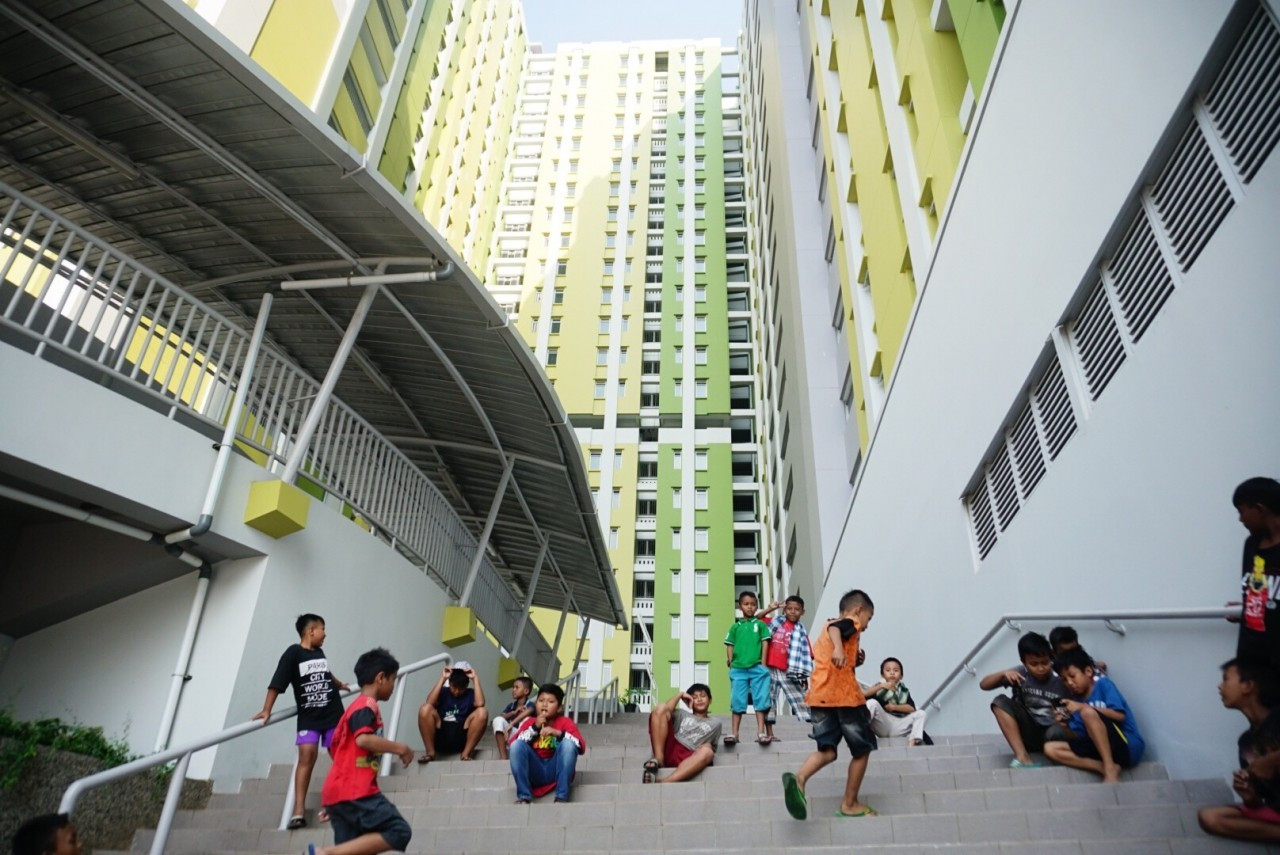News
Danantara to fund housing plan, shelving foreign loan talks
Tenggara Strategics July 8, 2025 Children play on Oct. 20, 2019 along a set of stairs at Rusun Pasar Rumput, a low-cost apartment complex that is part of a mixed-use development in South Jakarta. (JP/Syelanita)
Children play on Oct. 20, 2019 along a set of stairs at Rusun Pasar Rumput, a low-cost apartment complex that is part of a mixed-use development in South Jakarta. (JP/Syelanita)
Public Housing and Settlements Minister Maruarar “Ara” Sirait took many by surprise when he announced that Daya Anagata Nusantara (Danantara) Investment Management Agency would finance one of President Prabowo Subianto ’s flagship campaign promises: the construction of 3 million subsidized homes. Danantara has pledged a loan of Rp 8 trillion (US$ 138 million) for the project. With this move, earlier plans to finance the program through foreign loans were effectively shelved.
This sudden shift has sparked questions, especially considering that just a few months ago, the Housing Ministry had been in active negotiations with several multilateral lenders, including the World Bank, the Asian Development Bank (ADB), and the Asian Infrastructure Investment Bank (AIIB). These discussions were not merely exploratory; they had progressed significantly. In fact, the ADB had already offered a US$ 138 million loan in February to support the same housing initiative.
Danantara’s unexpected role in the program also raises concerns about the agency’s consistency with its mandate. As Indonesia’s sovereign wealth fund, Danantara was created to generate long-term financial returns for the country. Although it had been suggested that the agency might take part in strategic development efforts, subsidized housing—while socially beneficial—is not a wealth-generating investment.
This isn't the first time Danantara has been used to finance politically sensitive initiatives outside of the usual state budget process. Just last month, the agency injected capital into two troubled state-owned enterprises: flagship airline Garuda Indonesia and construction firm Wijaya Karya (WIKA). Both companies are mired in financial distress—Garuda continues to grapple with the aftermath of its debt restructuring, while WIKA is plagued by severe cash flow issues tied to stalled infrastructure projects. Rather than addressing these problems through transparent fiscal channels and legislative oversight, the government turned to Danantara, effectively using it as a financial shortcut that sidesteps parliamentary scrutiny.
Initially, the subsidized housing program garnered strong public support, particularly during the presidential campaign. However, recent unveilings of prototype homes have triggered disappointment. One of the mock-ups, developed by Lippo Group and showcased in South Jakarta, was widely criticized for its cramped size, with a building area of just 14 square meters.
The Housing Ministry is expected to finalize a minimum building size of 18 square meters for its housing program, according to a leaked draft of a ministerial decree. This marks a significant reduction from earlier plans. Under the ministry’s previous decree No. 689/KPTS/M/2023, the minimum requirements were set at a 60-square-meter land plot and a 21-square-meter building area. In the leaked draft, these figures have been revised down to just 25 square meters for the land and 18 square meters for the building.
When asked about the reduced size on June 2, Minister Ara responded optimistically, stating, “I don’t think it (the size of the homes) would disadvantage anyone. I’m optimistic this policy will be received well.”
Criticism, however, has not only come from the public. Within the ministry itself, dissent has emerged. Deputy Housing Minister Fahri Hamzah challenged the new specifications, arguing that they violate Law No. 1/2011, which stipulates that subsidized homes must have a minimum building size of 36 square meters. “The minimal building area for subsidized housing should be 36 square meters,” Fahri stated on June 18, directly contradicting the minister’s defense.
Further complicating the issue is the leaked draft decree mentions the estimated pricing of the subsidized homes. Notably, the draft does not revise the existing price ceilings, using the same price caps set in the housing ministerial decree No. 689/KPTS/M/2023. Developers have voiced concern over this, pointing out that the 2023 prices were calculated during a period of economic uncertainty and were only intended to remain valid until 2025. In their view, the 2025 decree should include an adjustment to reflect inflation and rising land costs.
Dissent appears to extend even to President Prabowo’s own inner circle. Hashim Djojohadikusumo, the head of the housing task force and a key advisor to the president, was said to have disapproved the reduced housing sizes. In response to the mounting criticism, Minister Ara met with Hashim on June 17 and shared photos of their meeting on social media, suggesting that the two parties have reached an agreement. According to Ara, Hashim had requested that the housing plan be improved, though no specific suggestions were made. On the same day, Ara also emphasized that discussions are still ongoing and indicated that Hashim would be invited to tour the showcase homes himself.
What we've heard
A source revealed growing suspicions of an alleged agreement between Ara and several developers to accelerate the 3 million subsidized housing program. Among the list of suspects is the Lippo Group, who recently showcased the mock-ups.

